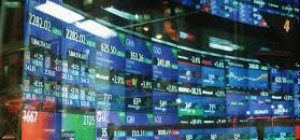 With the impressive growth in technological advancements in trading and financial market applications, algorithmic trading and live trading systems are getting welcomed and accepted by exchanges worldwide.
With the impressive growth in technological advancements in trading and financial market applications, algorithmic trading and live trading systems are getting welcomed and accepted by exchanges worldwide.
Over the last decade, live trading has become the most common way of trading in the developed markets and is growingly spreading in the developing economies. If you want to make the most of live trading, you must learn algorithmic trading to earn lucratively.
Before going any further, note that automated trading does not mean it’s free from complete human intervention. Automated or live trading has caused the concentration of human intervention to shift from trading to a more indirect role, including devising newer alpha-seeking strategies frequently.
Technical Requirements for Algorithmic Trading
To implement the algorithm, using a computer system is the main component of algorithmic trading. You also need to work onBacktesting(trying out the algorithm on historical times of past stock-market performance to find out if using it would have been profitable).
The challenge for you is to transform the known strategy into an integrated computerized process that has access to a trading account so that you can place orders. The following are some of the needs for algorithmic trading:
- You should have computer-programming knowledge to implement the required trading strategy, hired programmers, or even pre-created trading software.
- You must have fast network connectivity and access to trading platforms so that you can place orders.
- Get access to market data feeds that will be checked by the algorithm for chances to place orders.
- The capability and basic infrastructure to Backtest the trading system when you build it before it gets live in real markets.
- Available historical information for Backtesting depending on the complications of rules that you implement in the algorithm.
Know about Algorithmic Trading Strategies to implement Trading Systems Properly
Algorithmic or live trading strategies are several types of ideas for performing the most profitable algorithmic trade. Any strategy you perform on an algorithmic trading platform needs an identified opportunity that is lucrative in terms of improved earnings or price reduction. The following are popular trading strategies you can use to do algo trading.
Time-Series Momentum or Mean Reversion
The general idea of time-series forecasting is to forecast future values based on previously observed values. Time-series momentum, also called trend-following, seeks to produce excess returns by expecting that the future cost return of an asset will be in the same direction as that asset’s return over in the past.
These strategies may look for specific price actions, like range breakouts, volatility jumps, and even volume profile skews, or to define a trend based on a moving average that levels past price movements.
One of the simple, popular strategies you can use on your algorithmic trading platform is the “simple moving average crossover”. It purchases a stock if its short-period moving average value exceeds its long-period moving average value and sells if the opposite event happens.
Here one of the most popular indicators that you can use is the Relative Strength Index or RSI. The tool measures the speed and changes of the price movements with a scale of 0 to 100. With the motive to assess the likelihood of mean-reversion, a higher value of RSI can indicate an overbought asset, whereas a lower RSI value can indicate an oversold asset.
Trend-Following
It is a popular strategy that follows trends in technical indicators, like price level movements, moving averages, and channel breakouts. These do not need you to make any price forecasts or predictions. These strategies will execute when your desirable trends take place without needing complicated predictive analysis.
Volume-Weighted Average Price (VWAP)
The volume-weighted average strategy uses a specific stock’s historical volume data to break large orders into tinier pieces. Then Volume-weighted average strategy dynamically releases these pieces for execution.
The main goal of the strategy is to perform the entire order close to the volume-weighted average price. If you are a mutual fund or institutional buyer, you may use VWAP to purchase or sell stocks without extensively impacting the market. Being a trader, you may start long positions if the cost is more than VWAP, and you may take short positions if the cost is below VWAP.
Market Making Algorithmic Trading Strategy
The main role of a market-making algorithm is to supply you with buy and sell price quotes. You can also use marketing making algorithms trading for matching buy and sell orders. One of the most common market-making algorithmic strategies implicates instantaneously for buy and sell orders. Such types of market-making algorithms are there to grip the spreads.
To sum up, investing in a suitable and sufficient algorithmic trading platform is your first step towards effective live trading. You can successfully implement trading systems only when you use the right strategies and platforms.







